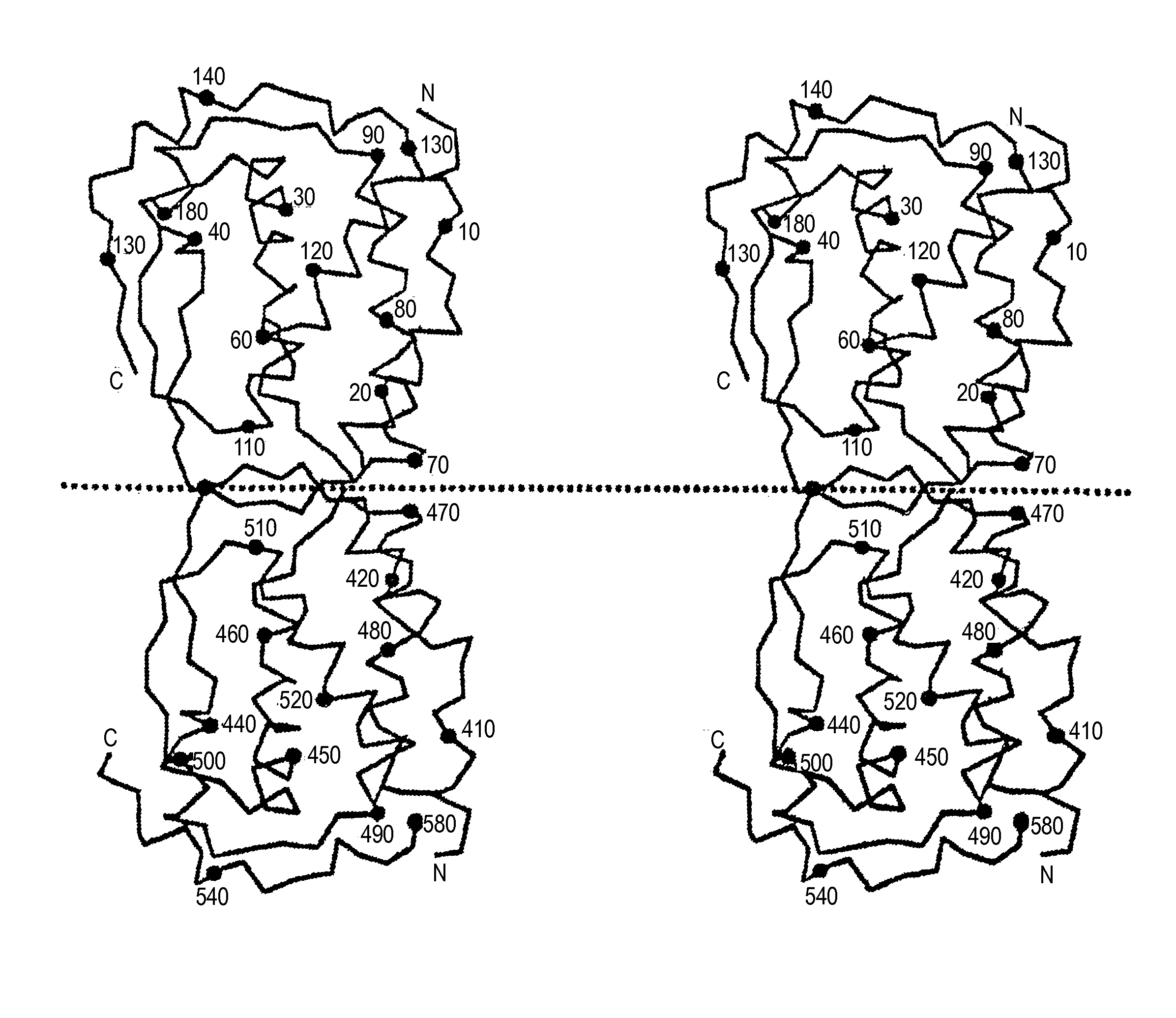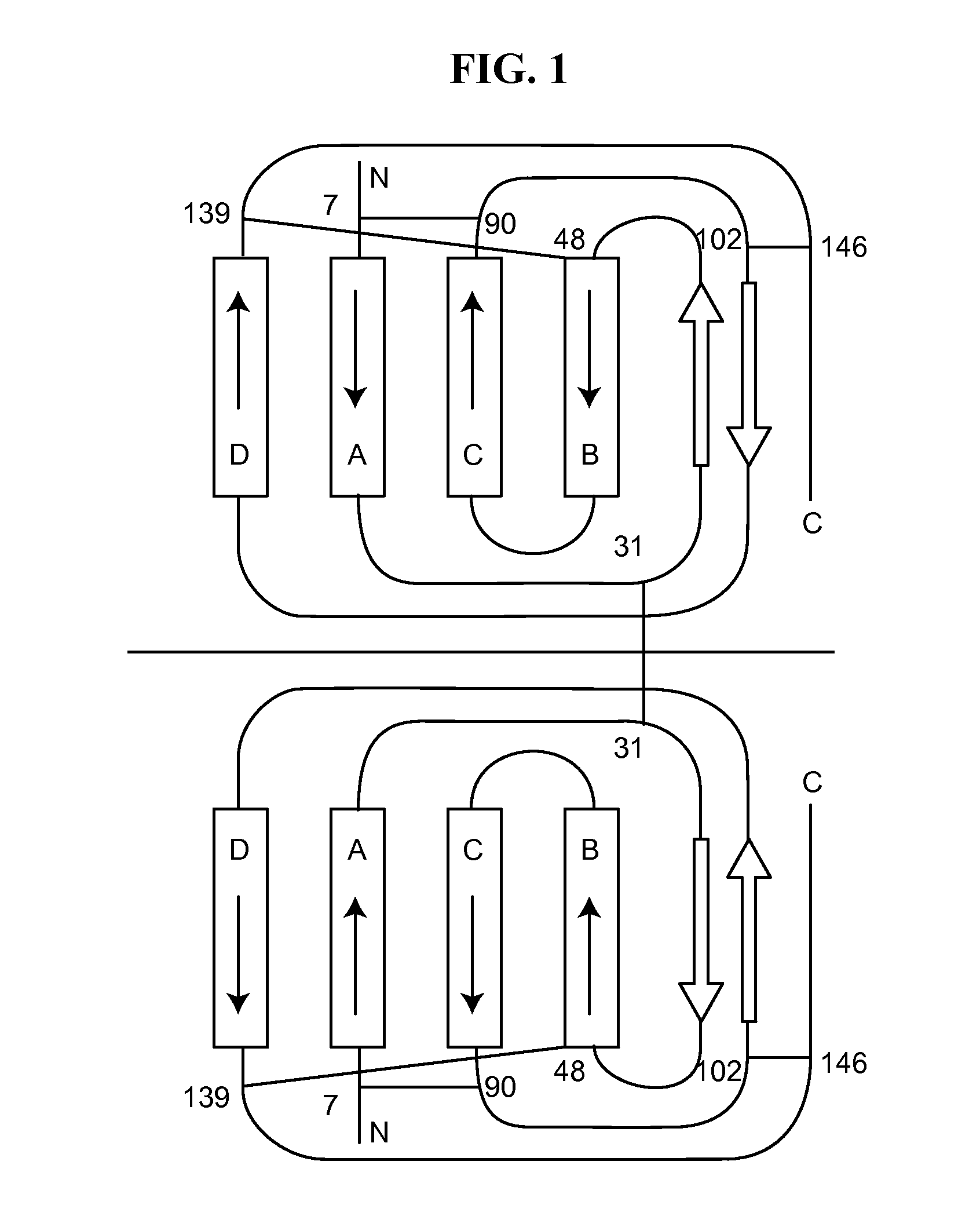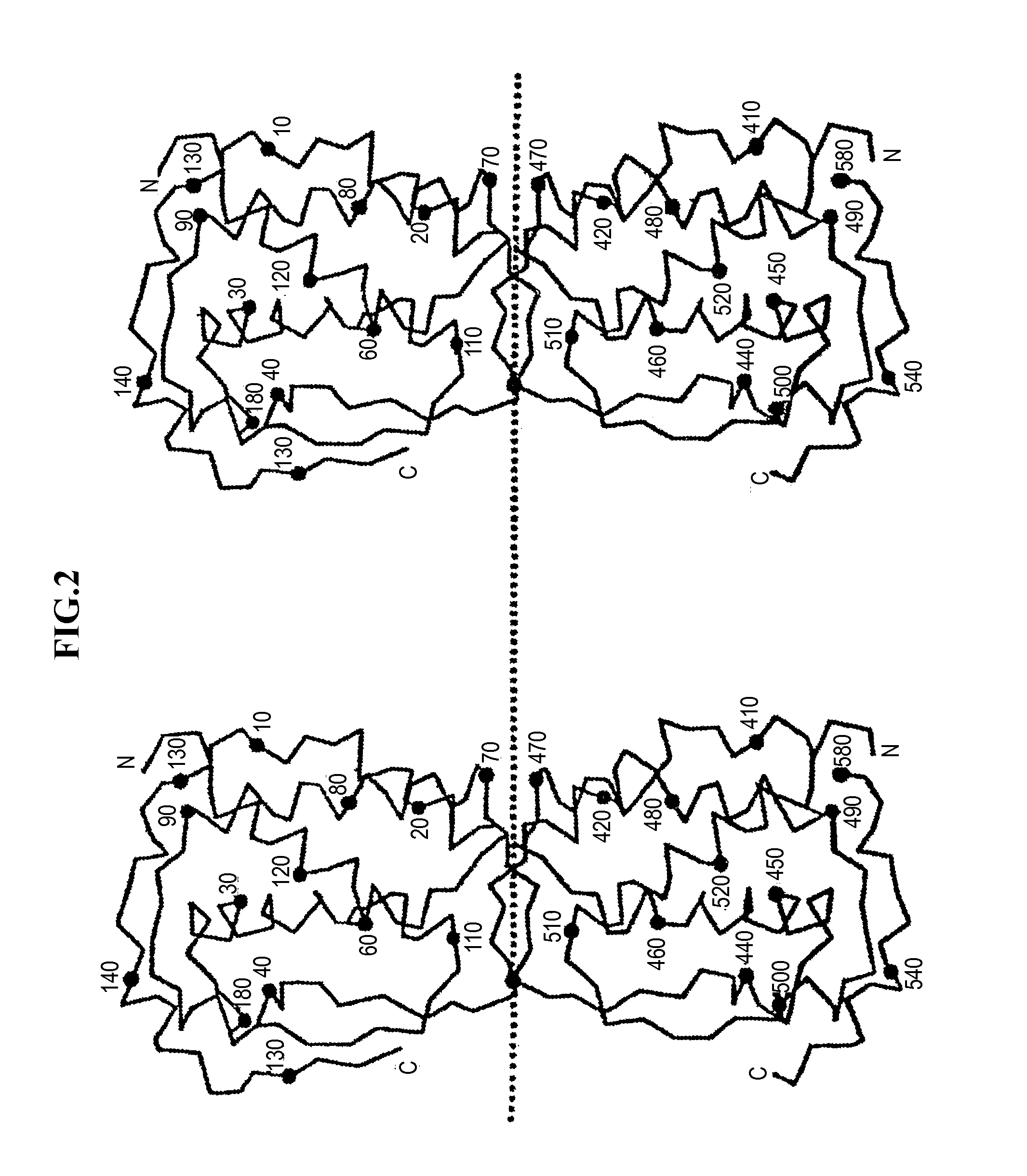M-csf specific monoclonal antibody and uses thereof
a monoclonal antibody and specific technology, applied in the field of mcsf specific monoclonal antibody, can solve the problems of high susceptibility, serious morbidity, and substantial refractory to cancer metastasis therapy, and achieve the effect of preventing or reducing bone loss
- Summary
- Abstract
- Description
- Claims
- Application Information
AI Technical Summary
Benefits of technology
Problems solved by technology
Method used
Image
Examples
example 1
[0420]This example shows that M-CSF antibodies RX1 and 5A1 are species specific and that antibodies RX1, MC1, and MC3 neutralize human M-CSF activity. RX1 is a commercially sold antibody that was available more than a year prior to the filing date of this application. Exemplary commercial sources include, but are not limited to, mouse anti-human M-CSF monoclonal antibody clones 116, 692, and 21 (Anogen); anti-human M-CSF antibody clones 21113.131, 26730, and 26786 (R & D Systems, Inc.); and anti-human M-CSF antibodyclone M16 (Antigenix America, Inc.).
[0421]To test the neutralizing activity of RX1 and 5A1, a proliferation assay of M-NFS-60 cell line was used (American Type Culture Collection Accession No. CRL-1838, available from ATCC in Rockville, Md., USA, derived from a myelogenous leukemia induced with the Cas-Br-MuLV wild mouse ecotropic retrovirous, responsive to both interleukin 3 and M-CSF and which contain a truncated c-myb proto-oncogene caused by the integration of a retro...
example 2
[0423]This example shows that antibody RX1 effectively inhibits osteolysis in a human xenograft model at a dose of 5 mg / kg. Female nude mice at the age of 4-7 weeks old, average weight ˜20 g were used in this study. Tumor cells (MDA-MB-231, 3×105) suspended in 10 μl of saline was be injected into the right tibia bone marrow cavity. Radiograms of the hind legs were taken one day after tumor inoculation for getting baseline image and checking for bone fracture caused by injection. Mice were randomized into treatment groups at 10 mice per group including PBS and RX1 at 5 mg / kg, injected i.p. once a week for 6 weeks. At the end of study, radiograms of the hind legs were taken again and compared against baseline for bone damage. The degree of bone damage caused by tumor was defined as shown in FIG. 6. The group with RX1 5 mg / kg treatment showed statistically significant protection of the bone from tumor-cased damage.
example 3
[0424]This example shows that the number of metastases is reduced when antibody RX1 is administered to human breast cancer MDA-MB-231 bearing nude mice at a concentration of 5 mg / kg.
[0425]Female nude mice at the age of 4-7 weeks old, average weight ˜20 g were used for this study. Tumor cells (MDA-MB-231, 3×105) suspended in 10 μl of saline was injected into the right tibia bone marrow cavity. Radiograms of the hind legs were taken one day after tumor inoculation for getting baseline image and checking for bone fracture caused by injection. Mice were randomly grouped into the treatment groups including PBS and RX1 at 5 mg / kg injected i.p. once a week for 6 weeks. At the end of study, lungs of each treatment group were collected and fixed in Bouin's solution for metastatic lung nodule counting.
[0426]As shown in FIG. 7, that the number of metastases is reduced when antibody RX1 is administered to human breast cancer MDA-MB-231 bearing nude mice at a dose of 5 mg / kg.
PUM
| Property | Measurement | Unit |
|---|---|---|
| dissociation equilibrium constant | aaaaa | aaaaa |
| diameter | aaaaa | aaaaa |
| diameter | aaaaa | aaaaa |
Abstract
Description
Claims
Application Information
 Login to View More
Login to View More - R&D
- Intellectual Property
- Life Sciences
- Materials
- Tech Scout
- Unparalleled Data Quality
- Higher Quality Content
- 60% Fewer Hallucinations
Browse by: Latest US Patents, China's latest patents, Technical Efficacy Thesaurus, Application Domain, Technology Topic, Popular Technical Reports.
© 2025 PatSnap. All rights reserved.Legal|Privacy policy|Modern Slavery Act Transparency Statement|Sitemap|About US| Contact US: help@patsnap.com



